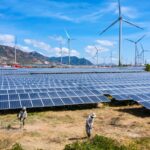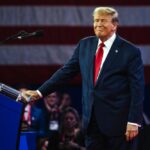Officials from South Korea, India and Europe said on Monday they are eager to reach a framework trade agreement with the United States to reduce the huge tariffs President Donald Trump threatened to impose early next month.
Trump stepped up tariff remarks over the weekend, saying he would impose a 30% tariff on most imports from the EU and Mexico next month, following similar warnings to other countries such as Japan, South Korea and India.
The looming August 1 deadline sparked a fight among global governments to seal the trade agreement.
See also: NVIDIA’s Huang says Chinese military “can’t rely on American technology”
Two Indian government sources said on Monday that the Indian trade delegation had arrived in Washington to hold new talks on a trade agreement with the United States.
The Times of India quoted a report saying both sides want Reduce U.S. tariffs from 26% to 20%which will give India an advantage over other countries in the region.
Seoul can open agricultural markets
South Korea’s top trade envoy said Monday could potentially reach a “principles” agreement by the deadline and showed that Seoul could be opened to allow the United States to enter its agricultural markets even more, local media reported.
Media reports said that the Trade Secretary Yeo Han-Koo, which held senior talks with U.S. officials last week, said South Korea is seeking to avoid key “unfair” U.S. tariffs on its industrial strength, which would undermine industrial cooperation with its main security and trading partners.
“I believe it is possible to reach an agreement in the U.S. tariff negotiations and then take some time to negotiate further negotiations,” News News Agency quoted Yeo to local media reporters.
He added: “Twenty days are not enough to come up with a perfect treaty with all the details.”
South Korea is competing for a compromised trade deal in an effort to avoid 25% tariffs on its exports, the same level Japan faces.
‘30% tariffs kill U.S. EU trade’
Meanwhile, in Brussels, the EU Trade Minister discussed the tariff threat, and European Trade Commissioner Maros Sefcovic warned that it would actually eliminate trade between the United States and the 27-nation Bloc, which are currently each other’s largest trading partners.
But he expressed optimism that the talks between Washington and the EU had achieved positive results for both sides.
“We have to do everything I will do to prevent this super negative scenario,” Sevkovic said.
White House economic adviser Kevin Hassett said on Sunday that so far the offer provided by the trade agreements was not satisfactory to Trump, adding that “the tariffs are real” if there is no improvement.
“The president believes the deal needs to be better,” Hassett told ABC’s plan for the week. “Basically, he put a line on the beach and he sent these letters to people and we’re going to see how it works.”
Warning causes alarm in Germany
The threatening responsibility sounded a wake-up call in Germany, the largest economy in the EU.
Friedrich Merz said Sunday that tariffs “to reach the German export industry” would “to reach the German export industry” after heads of the German Chamber of Commerce and Industry Chambers called for quick action.
“The increasing tariff conflict with the United States poses a serious threat to many German companies,” Volker Treier said on Monday. “Tough negotiations are now needed to avoid the collapse of the transatlantic trade.”
So far, the EU has taken retaliation measures to avoid a spiral-stimulating tit escalation in the trade war, while still having the opportunity to negotiate improved outcomes.
But Italy’s Foreign Minister Antonio Tajani said the EU has prepared a 2.1 billion euro ($24.5 billion) tariff list worth 2.1 billion euros ($24.5 billion) if the two sides fail to reach a trade deal.
Meanwhile, European industries are preparing for the worst.
Italian producers of famous Chianti wines in Tuscany demand a new export strategy to support the EU in alternative markets such as South America, Asia and Africa.
Market speculation
Since returning to the White House earlier this year, Trump has been trying to use a range of tariffs to boost the U.S. economy, push companies to invest in the U.S. and revitalize sectors, including manufacturing.
His initial Reciprocal tariff announcement in early AprilThis sets a 10% baseline tariff on all imports and higher responsibilities in certain products or countries, which raises concerns about global supply chain disruptions and triggers shock waves through the market.
But the subsequent turnover and delays, including the 90-day pause that most aim to allow time to negotiate trade deals, has allowed investors to largely push Trump’s chaotic policy out.
European stocks fell on Monday, while U.S. futures pointed to the latest Salvo’s lower Wall Street opening. European car and alcohol stocks are the toughest people.
In late news on Monday, Hassett said that talks were also held with Canada and Mexico.
Asked about his expectations for talks with the EU, the White House National Economic Commission director said: “We will see … we have a few weeks left.”
- Jim Pollard’s additional editor Reuters








